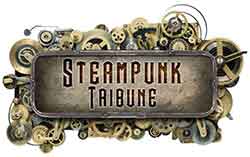Exploring the world of 1800s surnames offers a fascinating glimpse into the social and cultural dynamics of the past. During this period, surnames were often derived from occupations, geographical locations, or ancestral lineage. Understanding the origins of these names provides insight into the lives and identities of individuals from that era.

Surnames such as Smith, Miller, and Taylor suggest a connection to professions commonly practiced during the 19th century. These names often indicated the trade or craft of an individual, which was a crucial aspect of their identity. Names like Hill, Wood, and Lake might trace back to geographical features or landscapes associated with one’s living area.
Many 1800s surnames also reflect ancestral roots, with variations passing down through generations. Such names can offer a historical narrative, revealing migration patterns and familial links. Discovering these connections can yield invaluable information about one’s heritage and cultural history.
Origins of 1800s Surnames

In the 1800s, surnames were an integral part of identity, reflecting family history and geographical roots. Many British last names trace back to occupations, personal characteristics, or locations. Names like Carpenter or Thatcher highlighted a person’s trade, while others, such as Hill or Green, signified landscape features.
During the Victorian era, the expansion of records led to a formalization of surnames. This period saw increased consistency in surname spelling, affected by literacy and official documentation. The Industrial Revolution also played a role, bringing diverse regions together, and mixing surname traditions across communities.
Some last names had origins in familial relationships. Names like Johnson and Richardson were patronymic, indicating lineage from an ancestor named John or Richard. Similarly, Gaelic traditions influenced Irish and Scottish surnames, with prefixes like ‘Mac’ and ‘O’’ denoting ‘son of’ or ‘descendant of.’
An interesting aspect of surname history involves the adaptation of foreign names. With immigration in the 19th century, many surnames underwent Anglicization to fit English spelling conventions, altering their original form yet retaining their base identity.
The era’s surnames are valuable for historical research, offering insights into social structures. They serve as reminders of past occupations, geographical locales, and familial ties. Such names remain a bridge between past and present, telling stories of ancestry and migration throughout history.
Influence of the Victorian Era on Surnames

The Victorian Era significantly impacted surnames in England, particularly through the societal values of the time and the transformative Industrial Revolution. This influence shaped both naming conventions and the proliferation of occupation-based surnames.
Victorian Values and Naming
Victorian society emphasized family lineage, tradition, and respectability. These values often influenced the choice of surnames, as they were seen as a reflection of one’s social standing.
Many popular Victorian surnames such as Smith, Johnson, and Brown were deeply rooted in tradition. Families often retained these names to signify stature and continuity. An emphasis on religious and moral values led to the adoption of biblical names, creating a connection to both family history and religious heritage. Victorian last names often carried connotations of respectability and decorum.
During this period, people began registering births formally, which solidified the use and spelling of many Victorian surnames. This registration added consistency and sometimes altered the pronunciation or spelling to align with social norms.
Industrial Revolution and Occupational Surnames
The Industrial Revolution brought about significant economic and industrial changes, which in turn affected surnames. Many surnames became tied to new occupations that emerged during this period, highlighting their bearer’s role in society.
Surnames like Baker, Carpenter, and Weaver reflected the occupation of the family’s ancestors. As new industries and trades developed, surnames evolved to include these new job titles. This trend resulted in a rich variety of occupational Victorian surnames.
Migration from rural areas to cities led to the diffusion of these names, marking the spread of occupational surnames beyond their initial regions. This change reflects how industrial growth influenced naming conventions, embedding a sense of identity tied to one’s profession.
Common 1800s Surnames and Their Significance
In the 1800s, surnames often held significant implications regarding a person’s origins, social status, and lineage. These names could denote geographical locations, familial relationships, or socio-economic status, offering insights into a person’s background.
Surname Prevalence and Class
The 1800s saw the prevalence of surnames like Smith, Jones, and Williams. These were often associated with the working class, as many originated from occupations. Names such as Smith derive from the trade of blacksmith, denoting a skilled craftsman.
Brown, another common surname, and Johnson also had origins tied to occupations or patronymic tradition. These names highlighted an individual’s connection to a particular trade or familial lineage, often indicating social class. The recurrence of such surnames in the census records reveals their significant presence across societal strata.
Geographical Surnames Origins
Surnames like Hill and Bennett often reflected geographical origins. Hill denoted a person who lived near a hill or incline, pointing to a specific geographical feature linked to the family’s home. This use offered a clue about where ancestors resided.
Bennett might relate to a specific town or area, pinning down a more localized origin within England or elsewhere. This pattern of naming helped identify the migratory paths families took or pinpointed their roots in various regions during that period. It highlights a connection between surnames and the landscape.
Patronyms and Matronyms
Patronyms and matronyms were a common feature in the 1800s among names like Johnson. This type of surname indicated “son of John,” showing the connection to one’s father. It structured family identification around paternal lineage.
This tradition maintained familial ties and continuity, passing down names through generations. While matronyms were less common, they served similarly by linking individuals to their maternal heritage. These naming conventions painted a picture of familial bonds and successions in society during that era.
Relationship to Estate and Status
Surnames also related to an individual’s estate or social status. A name like King might suggest elevated status, although it could also be used ironically or metaphorically. It symbolized a connection to power or wealth, perceived or real.
In some cases, surnames indicated land ownership or a role within a large estate. Names could imply a specific role in the household hierarchy or duties tied to land management. These associations reveal how surnames carried implications about one’s rank or responsibilities in the 1800s’ societal structure.
Social Mobility and Surname Changes
During the 1800s, social mobility influenced surname changes in various ways. Individuals and families often relocated to urban centers in search of better opportunities. Migration was a significant factor, with movements from rural to urban areas, or even between countries. This shift sometimes led to altered surnames to blend into new communities.
Occupational surnames, like Baker and Ward, reveal another aspect of social mobility. As people advanced their social standing or changed professions, surname modifications followed. A baker moving to a more prestigious role might adjust his name to reflect the change or simply to fit into a different social circle.
Names like Hall and Jackson also provide insight into social dynamics. The frequency of these names in records indicates migration patterns and economic shifts. Sometimes, adopting a more common surname helped assimilate into a community, fostering acceptance and opportunities for advancement.
The pressure to conform within a new community or region often led to the simplification of more complex surnames. Shorter names, or those easier to spell and pronounce, helped individuals to integrate more seamlessly. Changes were sometimes subtle, affecting spelling or pronunciation while retaining the base identity.
Overall, surname changes during this period mirror broader social trends and movements. Whether prompted by economic necessity, occupational shifts, or migration, these alterations were part of larger efforts to navigate societal structures efficiently and strategically.
Surname Variants and Spelling Differences
Throughout the 1800s, surnames exhibited various regional spelling variants due to differing linguistic influences and literacy levels. Discrepancies often appeared in official records, impacting name standardization.
Regional Spelling Variations
Regional accents and languages significantly influenced surname spellings. For example, Thomas might appear as Tomas in areas with strong Welsh influence. Names like Robinson and Wilson could have variations such as Robison and Wilsson due to regional dialects and phonetic interpretations. Local linguistic norms often dictated these variations, reflecting pronunciation differences and cultural integration.
In France, the surname Martin could be altered to Martine or Martain based on local dialects. Walker might manifest as Walkar or Waukere in areas influenced by Scots dialects. These differences reveal not only phonetic nuances but also cultural interactions and migrations. Regional variants highlight how pronunciation affected written forms, contributing to the diverse surname landscape of the period.
Literacy and Record Keeping
The connection between literacy levels and surname spelling consistency is significant. Many individuals in the 1800s were illiterate, relying on clerks or priests to record their names. This dependency often led to inconsistencies. For instance, Wright might appear as Write or Right depending on the recorder’s interpretation. Clerical errors and phonetic approximations were common, with an authority’s literacy level influencing record accuracy.
Underlining this issue, documentation like census records or parish registers often contained different spellings of the same surname. Variations such as White and Wite, or Green and Greene, underscore these inconsistencies. As literacy rates improved towards the century’s close, standardized spellings began to emerge, influenced by educational reforms and more accurate record-keeping practices.
Occupational and Descriptive Surnames
In the 1800s, surnames often reflected occupations or described physical traits. These names provide insight into the jobs people held and how surnames identified individuals in society.
Trade and Craft Surnames
Occupational surnames emerged from trades, with names such as Smith, Miller, and Carpenter denoting essential skills and trades in communities. Smith referred to blacksmiths, experts in metalwork. Miller indicated someone who worked at a mill, grinding grain, while Carpenter highlighted skills in woodworking.
Baker was common for those who baked bread. Similarly, Taylor represented tailors who crafted clothing, and Cook spoke to culinary experts.
These names often became hereditary, passing down through generations, reflecting the importance of commerce and craftsmanship.
Physical Attributes and Nicknames
Descriptive surnames identified individuals based on physical traits or characteristics. Names like Hall and Lee illustrated residential aspects, with Hall referring to someone living or working in a large house, and Lee indicating a person dwelling near a meadow or clearing.
Wood might describe someone living near or working with wood. Nicknames became surnames, such as Day, derived from a cheerful personality, or Watson, meaning “son of Walter,” connecting individuals to familial lineage.
These descriptive surnames served not only as identifiers but as records of personal characteristics or locations associated with families.
Family Names and Lineage
In the 1800s, surnames played a significant role in family identity and lineage. These names often indicated social status, heritage, or even occupations, with unique historical contexts shaping each surname.
Heraldic Family Names
Heraldic surnames often signified noble lineage. Names like “Harrison” or “Moore” were linked to emblem-bearing families. These surnames came with crests and coats of arms, symbolizing familial achievements or geographic ties.
The use of coats of arms was not limited to nobility. Lesser gentry and landowners, such as those with the surname “Ford” or “Allen,” also bore these symbols. They represented their family’s history and status. The transmission of heraldic names and symbols was meticulously recorded, ensuring an unbroken lineage and a visible link to ancestry.
Inheritance and Legacy
Inheritance practices impacted surname transmission in the 1800s. Typically, surnames were passed patrilineally, cementing the male lineage. Prominent families like the “Evans” or “Davis” ensured the family name was carried through male heirs. This tradition underscored familial loyalty and the importance of legacy.
Name changes were not uncommon for inheritance reasons. For instance, someone might adopt the surname “Morgan” or “Scott” to secure an inheritance, aligning with family expectations. Legacies were tied to both material wealth and the continuation of family identity through their surnames. This lineage tradition fortified the family’s societal standing, with each generation bearing the responsibility to uphold this legacy.
Cultural Influences and Foreign Surnames
In the 1800s, the United States saw a significant influx of immigrants which led to the blending of various cultural identities through surnames. The adoption and integration of non-British surnames became notable as cultures blended, often resulting in anglicized versions or entirely new surnames.
Integration of Immigrant Surnames
Migration played a significant role in shaping the diversity of surnames during the 1800s. Immigrants often retained their family names with slight modifications. For example, the surname Thompson, originally of British origin, became common among those arriving from Northern Europe.
Many Irish immigrants carried surnames like O’Reilly and Murphy. Upon arrival, these names were sometimes simplified, or altered to fit the phonetic and linguistic norms of English-speaking Americans.
With German and Scandinavian migrations, names such as Schmidt and Johansson were introduced. These were often translated to counterparts like Smith and Johnson to blend more seamlessly into American society. Recognition of names like Roberts and Lewis expanded as these cultural shifts took hold.
Adoption of Non-British Surnames
Non-British surnames became increasingly prevalent, as individuals and families chose to either retain or adapt their original surnames. Edwards and Clark, while traditionally Anglo-Saxon, were sometimes adopted by immigrants whose original surnames were less common in English.
Names from diverse origins, such as Price from Welsh or Carter from French, began to appear frequently. This reflected both individual’s pride in their heritage and the societal pressure to conform to English norms.
Incorporating these surnames was an important step in crafting a multicultural society, allowing individuals to maintain distinct identities while contributing to a shared community. This process is evident in the rich surname tapestry that exists today.
Trends in Modern Usage of 1800s Surnames
In contemporary society, 1800s surnames often reflect a blend of heritage and modern identity. Heritage surnames see a revival as people express cultural pride, while historical names gain contemporary relevance in fields like literature and business.
Revival of Heritage Surnames
Heritage surnames like Berkeley and Norman are experiencing a revival among families eager to connect with their roots. This trend is noticeable in regions like the United States and the United Kingdom, where individuals often embrace ancestral names as part of their identity.
The use of genealogy platforms and online databases has also fueled this trend. People uncover rich histories tied to names such as Fletcher and Lowe, adding personal significance to their family lineage.
Naming children after ancestors, such as Shaw or Culpepper, also gains popularity. It serves as a tribute, ensuring these surnames continue into future generations. This practice signifies respect for family history while reinforcing cultural identity.
Contemporary Relevance of Historical Surnames
Some 1800s surnames hold contemporary value in business and literature. Names like Hughes and Grant are found in business enterprises or as brand names due to their strong, noble associations.
Authors and filmmakers often choose historical surnames such as Churchill or Davenport to evoke a sense of tradition and depth in their characters. This adds richness and dimension to storytelling, appealing to audiences globally.
Additionally, surnames like Phillips and Stone are found in modern educational and scholarly works. They carry a sense of prestige, often linked to historical figures. As these names remain prevalent, they maintain relevance while contributing to cultural continuity.



